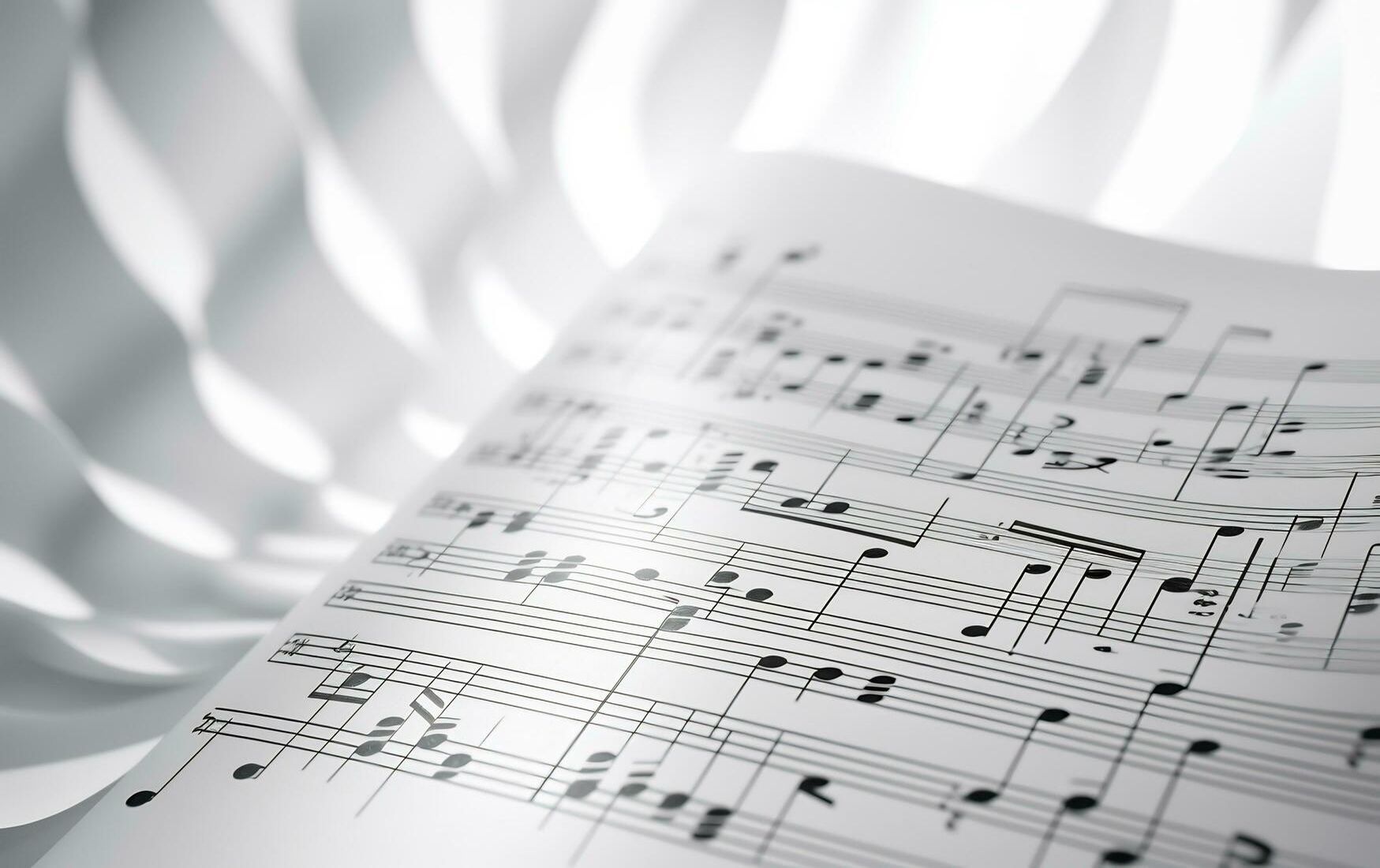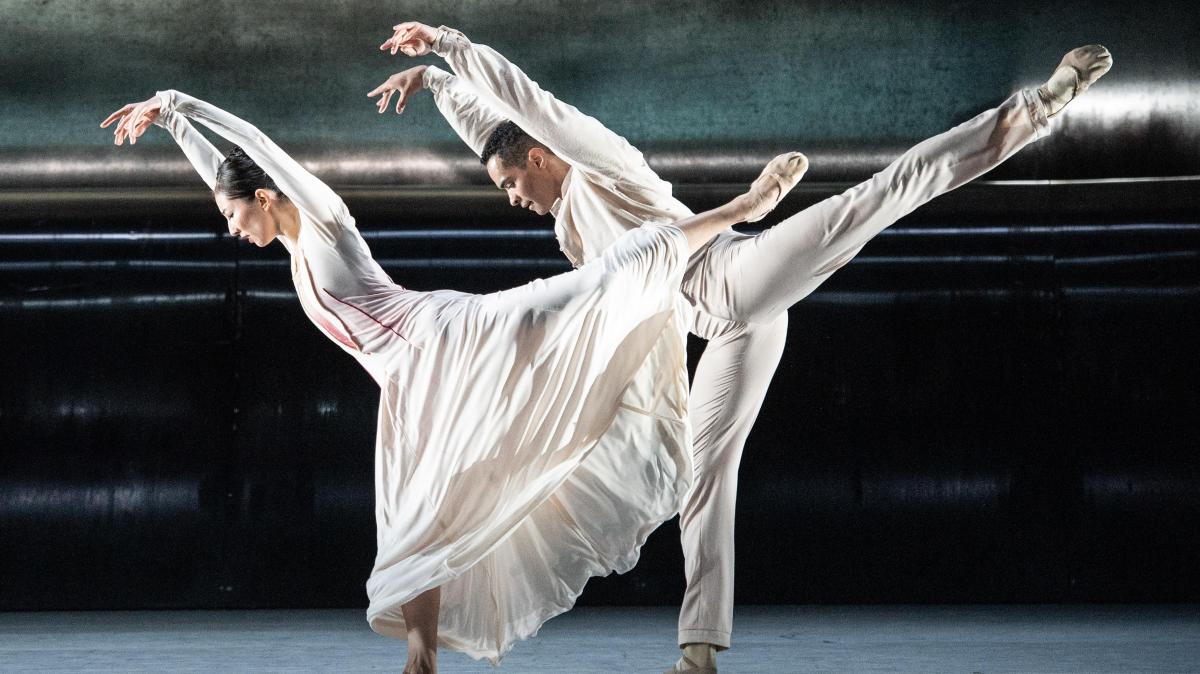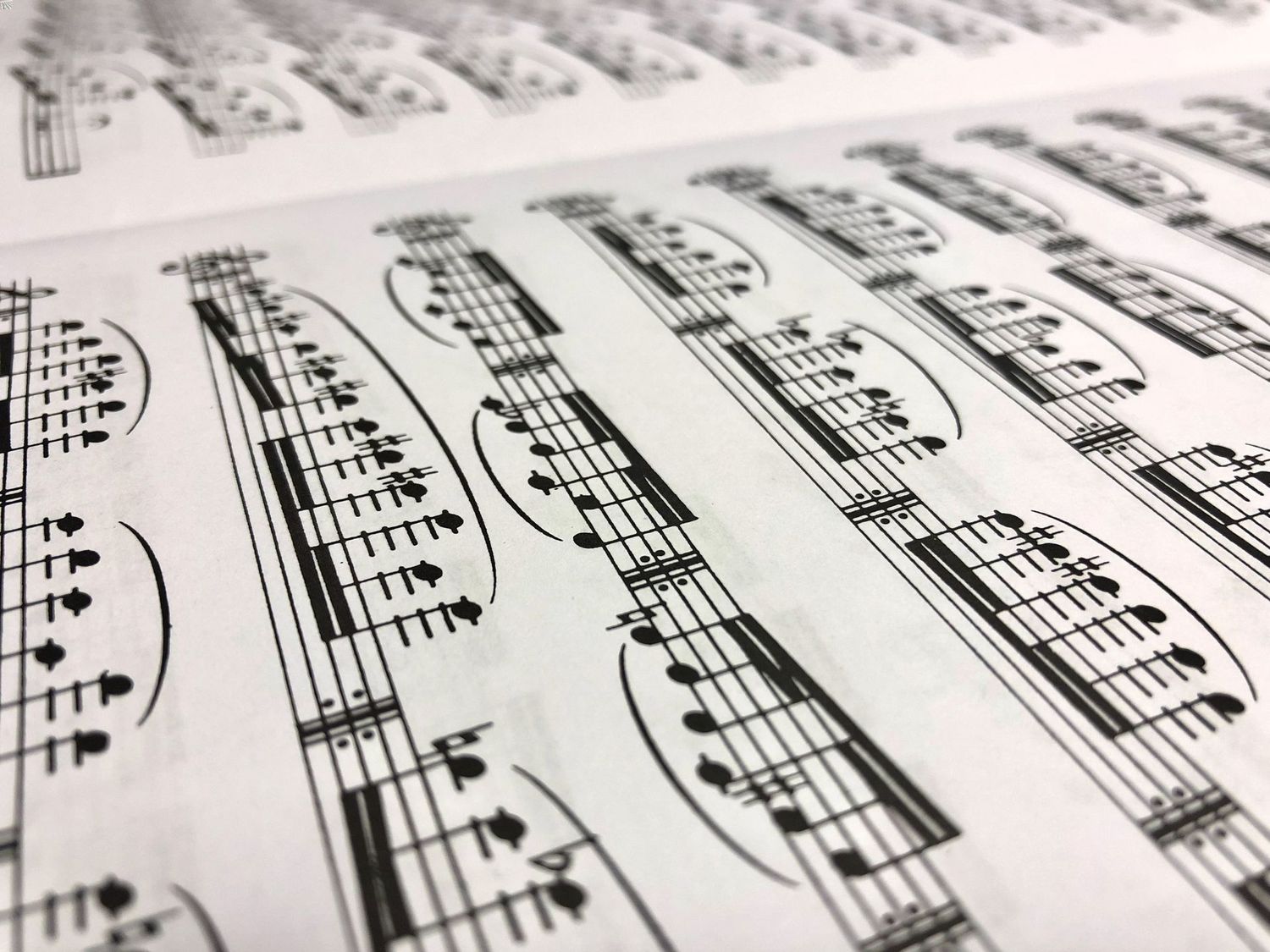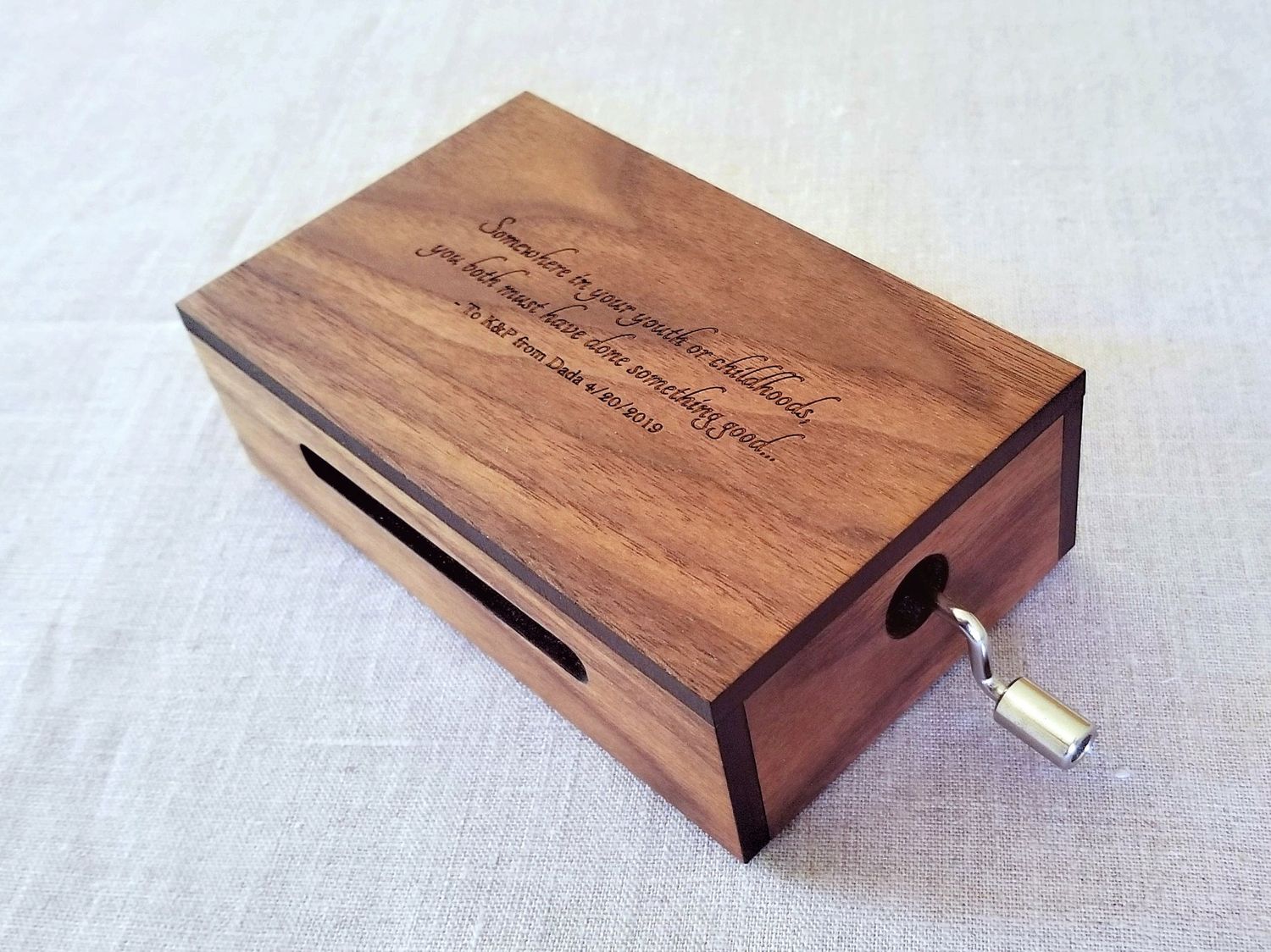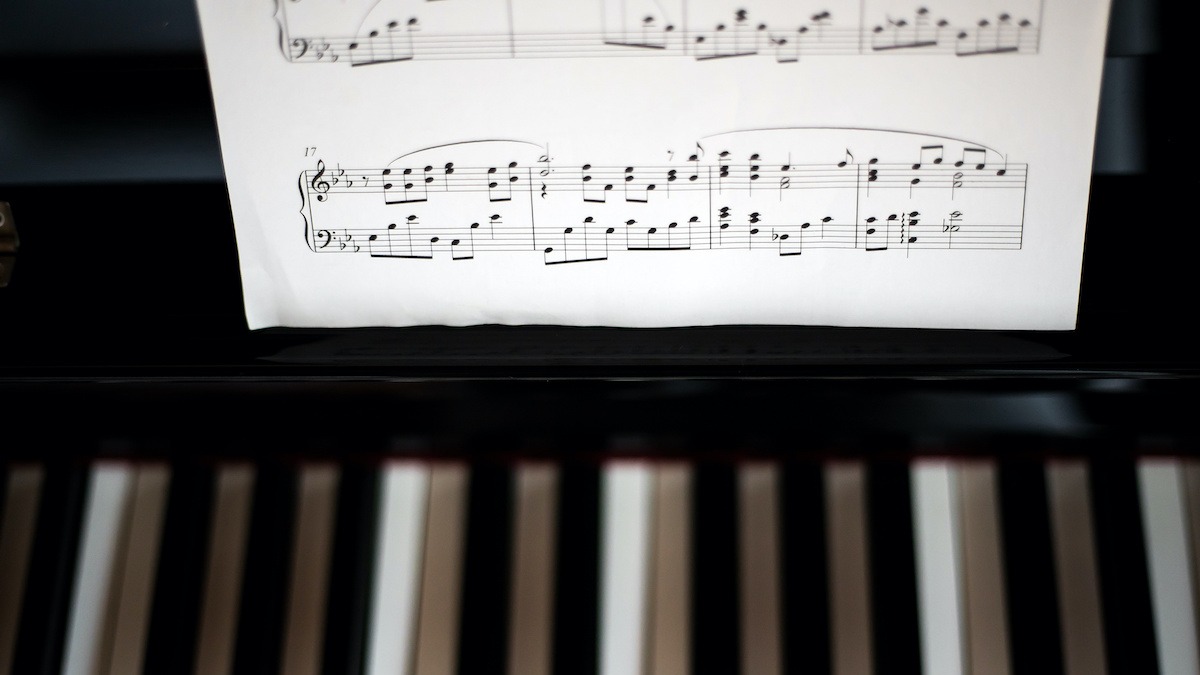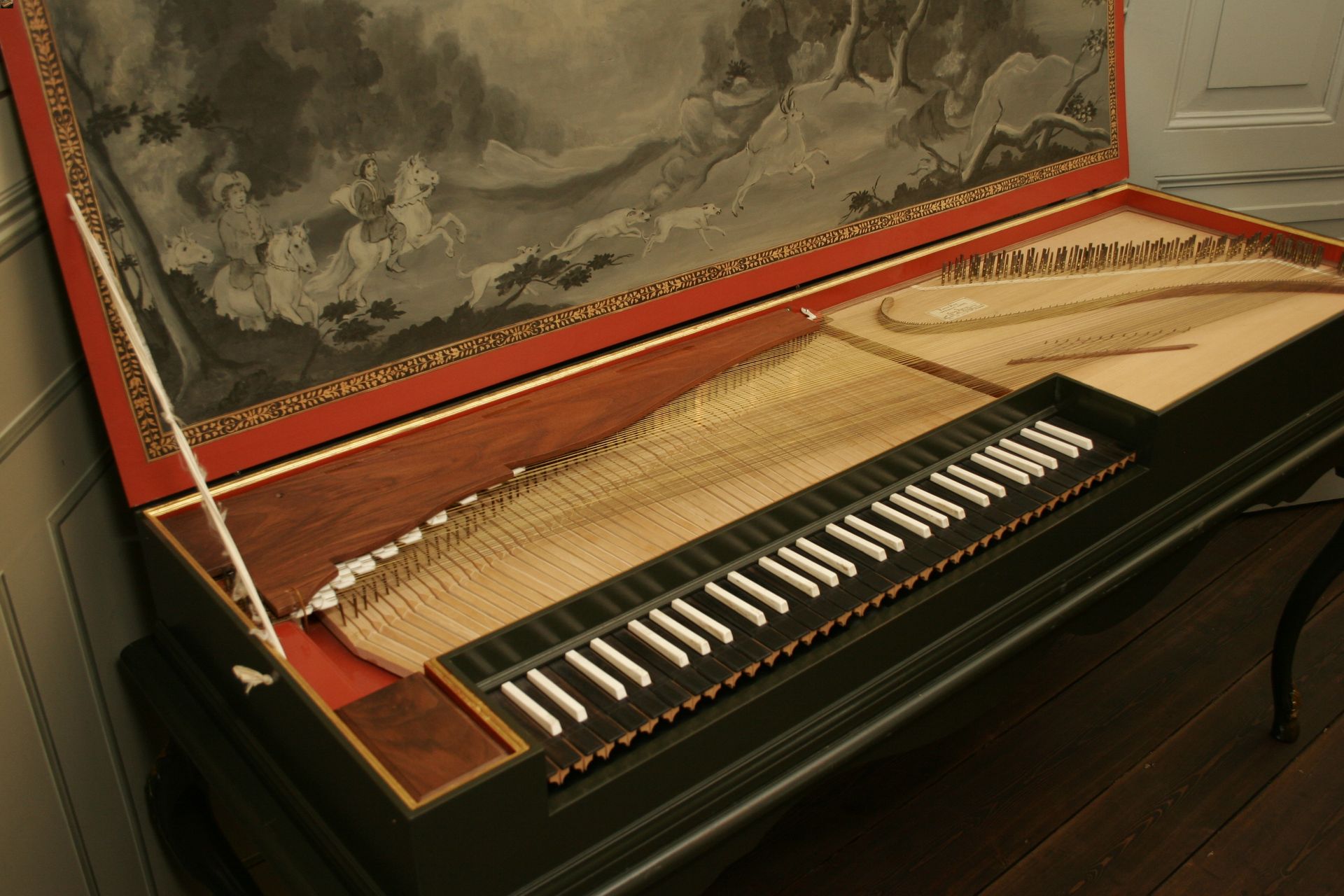Home>Devices & Equipment>Music Box>What Is A Music Box With A Dancer Called
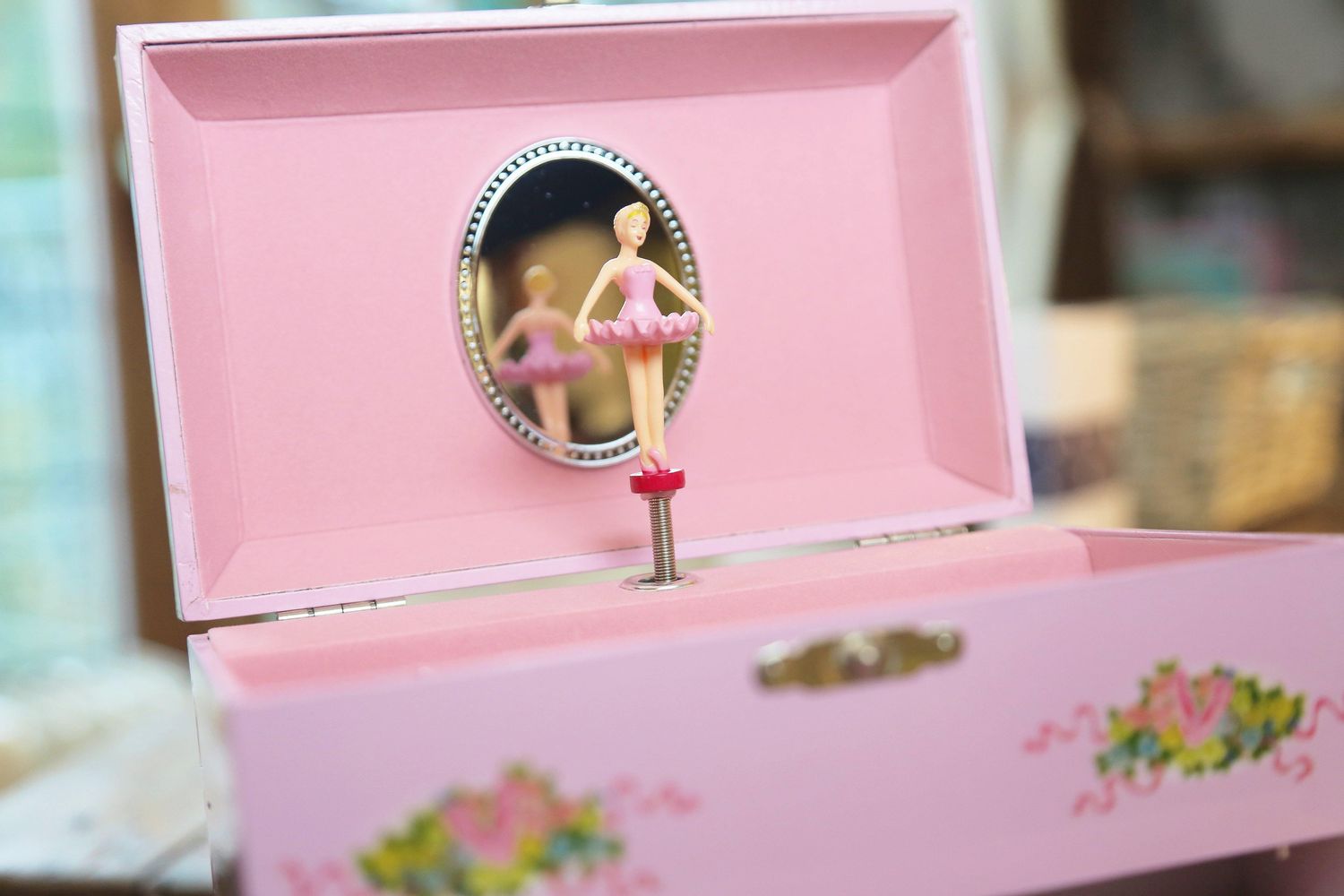

Music Box
What Is A Music Box With A Dancer Called
Published: January 12, 2024
Discover the enchanting world of music boxes with dancers! Learn about the captivating beauty and melodies created by these incredible [Music Box] treasures.
(Many of the links in this article redirect to a specific reviewed product. Your purchase of these products through affiliate links helps to generate commission for AudioLover.com, at no extra cost. Learn more)
Table of Contents
Introduction
Music boxes are enchanted musical instruments that have been captivating people for centuries. With their delicate melodies and intricate mechanisms, they evoke a sense of nostalgia and charm. Among the various types of music boxes, there is one that stands out – music boxes with dancers. These unique creations combine the magic of music with the graceful movements of a dancer, creating a mesmerizing spectacle.
The history of music boxes dates back to the 18th century, when they were first invented in Switzerland. Initially, music boxes were simple, with a mechanism that played predefined tunes on a set of metal pins. However, as innovation and craftsmanship improved, music boxes evolved to include intricate mechanisms that could produce complex melodies. One such innovation was the addition of a dancer.
Music boxes with dancers added an element of visual delight to the already charming melodies. As the music played, a tiny figurine would gracefully twirl and dance on top of the box, bringing the music to life. These dancing figures were carefully crafted with attention to detail, creating a miniature ballet performance in the palm of your hand.
The mechanism of music boxes with dancers is truly fascinating. It involves a delicate balance between the musical movement and the mechanical movement of the dancer. The music is produced by a set of rotating metal cylinders or disks with strategically placed pins that pluck the tuned metal teeth of a comb. Simultaneously, a separate mechanism controls the movement of the dancer, with tiny gears and levers orchestrating their graceful motions.
There are various types of dancer mechanisms found in music boxes. Some feature dancers mounted on a rotating platform, while others have articulated limbs that can move in a more realistic fashion. The dancing figures themselves can take on various forms, from ballerinas in tutus to elegant couples waltzing together.
Music boxes with dancers hold a special place in the hearts of collectors and enthusiasts. Their exquisite craftsmanship and timeless beauty make them highly sought-after. Whether displayed as decorative pieces or enjoyed as functional musical instruments, music boxes with dancers bring joy and delight to any setting.
In this article, we will delve into the history of music boxes, explore the intricate mechanisms that power them, and take a closer look at the evolution and importance of music boxes with dancers. Join us on this enchanting journey into the world of music boxes and discover the magic they behold.
History of Music Boxes
The roots of music boxes can be traced back to the 18th century in Switzerland, where they were first developed. Initially, these early music boxes were quite simple, consisting of a cylinder or disk embedded with metal pins that would pluck tuned metal teeth to produce musical notes. The melodies played by these early music boxes were limited and often repetitive.
However, as the demand for music boxes grew, craftsmen and inventors began to experiment with the design and mechanics of these musical instruments. By the early 19th century, music boxes had undergone significant advancements. The cylinder mechanism was refined, allowing for more complex tunes, and additional enhancements, such as bells and drums, were added to create a richer musical experience.
The popularity of music boxes spread throughout Europe, capturing the hearts of both aristocrats and common folk alike. As demand increased, music boxes were crafted with intricate details and adorned with luxurious materials, transforming them into symbols of wealth and refinement.
During the Victorian era in the 19th century, music boxes reached new heights of elegance and craftsmanship. The cases were often made from fine wood, such as mahogany or rosewood, and embellished with ornate inlays, carvings, or hand-painted designs. These elaborate exteriors hid the complex internal mechanisms that powered the music, adding an element of mystery to the experience of owning a music box.
In the late 19th and early 20th centuries, the popularity of music boxes began to wane with the advent of new technologies, such as phonographs and radios. However, music boxes never completely faded into obscurity. They continued to be cherished as collectibles and sentimental keepsakes, passed down through generations as treasured family heirlooms.
In recent years, there has been a resurgence of interest in music boxes, fueled by a nostalgia for the past and an appreciation for their unique charm. Today, music boxes are not only cherished as decorative pieces but are also sought after by collectors worldwide.
With advancements in technology, modern music boxes have incorporated electronic movements and even digital programming, providing an even wider range of melodies and customization options. However, the allure of traditional mechanical music boxes remains strong, with antique and vintage pieces highly coveted by enthusiasts.
From their humble beginnings in Switzerland to becoming cherished symbols of beauty and artistry, the history of music boxes is a testament to the enduring power of music and the craftsmanship of skilled artisans. As we continue to explore the world of music boxes, let us delve deeper into the mechanisms that bring these magical instruments to life.
Exploring the Mechanism
At first glance, a music box may seem like a simple object, but upon closer inspection, you will discover a complex mechanism that brings it to life. Understanding the intricate workings of a music box adds to the appreciation of its beauty and craftsmanship.
The heart of a music box lies in its mechanical movement. The movement consists of various components that work together to produce the enchanting melodies. One of the key elements is the cylinder or disk, which contains strategically placed pins or bumps. As the cylinder or disk rotates, these pins or bumps interact with a comb-like structure, known as the musical comb, producing musical notes of different pitches. The length and position of the pins or bumps determine the specific melody played by the music box.
The musical comb is made up of a series of metal teeth of varying lengths. Each tooth is tuned to a specific note, creating a harmonic ensemble when the pins or bumps engage with the teeth. The more teeth the comb has, the greater the range of notes the music box can produce.
In addition to the cylinder or disk and the musical comb, there are other essential components that contribute to the mechanism of a music box. These include the governor, which controls the speed at which the cylinder or disk rotates, and the spring mechanism that provides the necessary power to drive the movement.
The governor, typically in the form of a flywheel, helps regulate the rotation speed to ensure a consistent and smooth melody. It works in conjunction with a governor fan that creates air resistance, preventing the movement from spinning too quickly or erratically.
The spring mechanism, often referred to as the main spring, acts as the power source for the music box. When the spring is wound up, potential energy is stored in it. This energy is gradually released as the spring unwinds, driving the rotation of the cylinder or disk and activating the pins or bumps to engage with the musical comb.
As the music plays, the intricate mechanism is set in motion, producing a beautiful melody that resonates with the listener. The harmonious combination of rotating cylinders or disks, musical combs, and carefully placed pins or bumps truly showcases the artistry and craftsmanship of the music box maker.
While the basic mechanism of a music box remains consistent, variations in design and complexity can be found among different models. Some music boxes feature multiple cylinders or disks, allowing for a wider repertoire of melodies to be played. Others may include additional elements, such as bells or drums, to enhance the auditory experience.
Exploring the mechanism of a music box sheds light on the meticulous precision and engineering involved in creating these enchanting instruments. With every note that resonates, the interplay of gears and levers reminds us of the magic that music boxes bring into our lives.
Evolution of Music Boxes with Dancers
Music boxes have always held a certain fascination, but the addition of dancers took them to a whole new level of enchantment. The evolution of music boxes with dancers is a testament to the creativity and ingenuity of craftsmen throughout history.
The concept of combining music and movement goes back centuries, with automata being popular in the 18th and 19th centuries. These mechanical figures could perform various actions, including dancing, thanks to intricate clockwork mechanisms. The idea of integrating these moving figures into music boxes was a natural progression.
The early versions of music boxes with dancers were relatively simple. The dancer would be attached to a rotating platform, which would turn when the music played. The movement of the dancer was often limited to basic twirling or spinning. These early dancers were typically made of wood, with minimal articulation.
As music boxes became more sophisticated, so did the dancers. Craftsmen began creating figurines with articulated limbs, allowing for more realistic and graceful movements. This added a sense of elegance and beauty to the performance, enhancing the overall experience of the music box.
During the 19th century, particularly in the Victorian era, music boxes with dancers reached their peak of popularity. These exquisitely crafted pieces featured elaborately dressed dancers, often resembling ballerinas in tutus or couples in formal attire. The attention to detail in the costumes and facial expressions brought the dancers to life, capturing the imagination of those who witnessed their performances.
With advancements in technology, music boxes with dancers evolved even further. Electric motors replaced the manual winding mechanism, allowing for a continuous and smoother rotation of the dancer. Some modern versions even incorporated additional movements, such as the dancer moving across a miniature stage or performing more complex dance routines.
Today, music boxes with dancers come in various designs and styles. From classical ballerinas to whimsical characters, there is a wide array of options to suit different tastes and preferences. Some music boxes feature multiple dancers, creating intricate choreographies, while others may have interchangeable dancers, allowing for customization.
The evolution of music boxes with dancers not only demonstrates the technical advancements in craftsmanship but also reflects the changing tastes and societal trends throughout history. From simple twirling figures to sophisticated and expressive dancers, these enchanting creations continue to captivate audiences of all ages.
Whether displayed as a cherished collectible or enjoyed as a musical entertainment piece, music boxes with dancers serve as a reminder of the beauty that can be achieved through the combination of music and movement. As technology continues to advance, it will be fascinating to see how future iterations of music boxes with dancers will enchant and delight generations to come.
How Music Boxes with Dancers Work
Music boxes with dancers are captivating devices that bring together the enchanting melodies of a music box and the graceful movements of a dancer. Understanding how these mesmerizing instruments work adds to the appreciation of their beauty and craftsmanship.
At the heart of a music box with a dancer is a sophisticated mechanical movement that coordinates the music and the movements of the dancer. The music is produced by a rotating cylinder or disk with strategically placed pins or bumps. These pins or bumps engage with a comb-like structure, known as the musical comb, which consists of a series of tuned metal teeth. As the pins or bumps interact with the teeth, they pluck the teeth, creating musical notes of different pitches.
The dancer mechanism is a separate component of the music box. Typically, the dancer is mounted on a platform or spindle that is connected to a gear system. The gear system is driven by the main spring of the music box, which provides the necessary power for the movement. As the music plays, the rotation of the cylinder or disk and the engagement of the pins or bumps with the musical comb trigger the gear system, which then moves the platform or spindle that the dancer is attached to.
The movement of the dancer can vary depending on the design of the music box. In some music boxes, the dancer may simply rotate in a circular motion, performing twirls or spins. Other music boxes may have more complex mechanisms that allow the dancer to move across a miniature stage or even perform specific dance routines.
The synchronization between the music and the movements of the dancer is achieved through careful engineering and timing. The placement of the pins or bumps on the cylinder or disk is precisely calculated to correspond with specific sections of the music. As the pins or bumps engage with the teeth of the musical comb, generating the appropriate notes, the gear system activates the movement of the dancer at the right moments, creating a harmonious and synchronized performance.
The craftsmanship and attention to detail are vital in creating a captivating music box with a dancer. Each component of the mechanism must be meticulously designed and carefully assembled to ensure smooth and precise movement. The dancer itself is often intricately crafted, with delicate features and articulated limbs that bring it to life.
Music boxes with dancers are not only delightful to watch but also serve as a reminder of the magic that can be created through the combination of music and movement. The intricate mechanics and the synchronized performance of the music and the dancer make these instruments a cherished and cherished form of art and entertainment.
Whether displayed on a shelf, gifted to a loved one, or treasured as a family heirloom, a music box with a dancer is a captivating piece that captures the imagination and brings joy and beauty into our lives.
Different Types of Dancer Mechanisms
Music boxes with dancers come in a variety of designs, each featuring a unique dancer mechanism that brings an element of movement and grace to the enchanting melodies. Let’s explore some of the different types of dancer mechanisms found in these captivating instruments.
- Rotating Platform: This is the most common type of dancer mechanism. The dancer is attached to a platform that rotates in a circular motion when the music plays. As the platform turns, the dancer gracefully twirls, adding a mesmerizing visual element to the music box.
- Levitating Dancer: In this type of mechanism, the dancer appears to float or hover above the base of the music box. Hidden magnets create an illusion of suspension, giving the dancer an ethereal quality as it moves in response to the music.
- Jumping Dancer: This dancer mechanism adds an element of surprise and whimsy to the music box. When activated, the dancer appears to jump or spring up from the base, performing a brief and delightful movement before returning to its starting position.
- Sliding Dancer: The sliding dancer mechanism involves a track or rail system that enables the dancer to glide from one side to the other as the music box plays. This creates a sense of dynamic motion, as the dancer gracefully moves back and forth across the stage-like platform.
- Swinging Pendulum: Inspired by the motion of a pendulum, this dancer mechanism swings the dancer in a gentle arc from side to side. The repetitive swinging motion adds a soothing and rhythmic element to the performance, enhancing the overall charm of the music box.
Aside from these main types of dancer mechanisms, there are also variations and combinations that incorporate additional movements or elements. Some music boxes feature dancers that spin while moving across a track, creating a mesmerizing and intricate dance routine. Others may include multiple dancers, allowing for more elaborate choreographies and visual displays.
Each type of dancer mechanism brings its own unique charm and character to the music box, creating a captivating visual element that complements the melodies. Craftsmen and designers continue to innovate and push the boundaries of what is possible, resulting in an ever-expanding array of dancer mechanisms for music boxes.
When selecting a music box with a dancer, consider the type of dancer mechanism that resonates with you. Whether you are captivated by the graceful twirls of a rotating platform or the whimsical jumps of a jumping dancer, there is a dancer mechanism out there that will enchant and delight you.
Regardless of the type of dancer mechanism, each one adds a touch of magic and wonder to the music box. The combination of music and movement creates a truly captivating and immersive experience, transporting us into a world of beauty and imagination.
Importance of Music Boxes with Dancers
Music boxes with dancers hold a special place in both the world of music and the realm of decorative arts. These enchanting creations have a timeless appeal and offer a range of significance and importance.
First and foremost, music boxes with dancers bring joy and delight to people of all ages. The combination of beautiful melodies and graceful movements creates a multisensory experience that captivates and enchants. Watching the delicate twirls, spins, or jumps of the dancer adds an element of visual wonder to the music, elevating the overall emotional impact of the performance.
Music boxes with dancers also serve as a form of artistic expression. The craftsmanship and attention to detail involved in creating both the mechanical movement and the dancer itself display the skill and creativity of the artisans who craft these intricate pieces. From the delicate artistry in the design of the dancer’s costume to the precision engineering of the movement mechanism, music boxes with dancers are works of art in their own right.
Moreover, music boxes with dancers often carry sentimental value. They can be cherished family heirlooms that are passed down from generation to generation. The memories associated with these music boxes, such as receiving them as gifts or witnessing the joy they bring, create a sense of nostalgia and connection to the past.
Music boxes with dancers also hold significant cultural and historical importance. They provide a glimpse into the aesthetics and artistic preferences of different time periods. From the elegant ballerinas of the Victorian era to the whimsical characters in contemporary designs, the dancer motifs reflect the societal trends and values of their respective periods.
Additionally, music boxes with dancers contribute to the world of collecting and antiques. They are sought after by enthusiasts and collectors who appreciate their beauty, craftsmanship, and historical significance. Owning a unique or rare music box with a dancer can be a source of pride and a testament to one’s fascination with these captivating instruments.
Furthermore, music boxes with dancers have a universal appeal that transcends language and cultural barriers. They evoke emotions and create a sense of wonder that can be appreciated by people from all walks of life, making them a truly global form of art and entertainment.
In today’s fast-paced world, music boxes with dancers offer a moment of respite and tranquility. The act of winding up the music box and watching the dancer gracefully move to the melodies can provide a sense of calm and relaxation, offering a temporary escape from the demands of everyday life.
Whether displayed as decorative pieces in homes or enjoyed as cherished possessions, music boxes with dancers play an important role in celebrating the beauty of music, movement, and craftsmanship. They bring joy, evoke emotions, and remind us of the enduring magic and wonder that can be created through the combination of art and technology.
Collecting and Preserving Music Boxes with Dancers
Collecting music boxes with dancers is a passion shared by enthusiasts around the world. These delicate and intricate instruments are not only treasured for their beauty and craftsmanship, but also for the nostalgia and joy they bring. If you are interested in starting a collection or already have a few pieces, here are some tips on collecting and preserving music boxes with dancers.
Research and Knowledge: Before starting your collection, take the time to learn about different types of music boxes with dancers, their history, and the makers behind them. Familiarize yourself with various styles and designs, as well as their values in the market. This knowledge will help you make informed decisions and appreciate the uniqueness of each piece you acquire.
Condition and Authenticity: When collecting music boxes with dancers, it’s essential to assess their condition and authenticity. Look for any signs of damage, such as cracks, missing or damaged teeth on the musical comb, or issues with the dancer mechanism. Verify the authenticity of the piece by researching the maker’s markings, signatures, or certificates of authenticity, if available.
Quality Craftsmanship: Seek out music boxes with dancers that exhibit exceptional craftsmanship. Look for attention to detail, precision in the movement, and high-quality materials used in both the mechanical mechanism and the dancer. Pieces made by renowned makers or those with unique and intricate designs tend to hold greater value and appreciation among collectors.
Proper Display: When displaying your music boxes with dancers, choose a location away from direct sunlight, extreme temperatures, and humidity. Sunlight can fade colors and deteriorate materials over time. Opt for a display case or shelf that provides protection from dust and accidental damage, but still allows you to showcase and enjoy your collection.
Regular Maintenance: Music boxes with dancers require regular maintenance to ensure their optimal performance and longevity. Follow the manufacturer’s instructions or consult with a professional specialized in music box repair and maintenance. This may include oiling the movement, cleaning the musical comb, and inspecting the dancer mechanism for any signs of wear or damage.
Preserving Originality: While it can be tempting to restore or modify a music box with a dancer, it’s important to consider the impact on its authenticity and value. Altering the original components or finishes may diminish its historical significance or appeal to collectors. If restoration is necessary, consult with experts who have experience in preserving the authenticity and integrity of these delicate instruments.
Documenting and Insuring: Keep a record of your collection, including any relevant information such as maker, model, date of acquisition, and value. Take detailed photographs of each music box with a dancer, documenting the condition and any unique features. Consider insuring your collection to protect it from potential damage, theft, or loss.
Enjoying the Journey: Above all, collecting music boxes with dancers is a journey of appreciation and enjoyment. Take the time to listen to the melodies, watch the dancers perform their graceful movements, and let the magic of these enchanting instruments fill your heart. Share your passion with fellow collectors, attend auctions or exhibitions, and immerse yourself in the rich history and allure of these captivating pieces.
By following these tips and embracing the wonder of music boxes with dancers, you can create a collection that brings joy and beauty into your life while preserving these delicate treasures for generations to come.
Conclusion
Music boxes with dancers are more than just musical instruments – they are enchanting pieces that combine the magic of music with the grace of movement. Through their delicate melodies and intricate mechanisms, they evoke a sense of wonder, nostalgia, and joy.
The history of music boxes dates back to the 18th century, where they first emerged in Switzerland. Over time, music boxes evolved from simple mechanisms playing repetitive tunes to more complex creations that could produce a wider range of melodies. The addition of dancers further elevated the appeal of music boxes, bringing captivating visual performances to accompany the melodies.
Exploring the mechanism of music boxes with dancers reveals the remarkable craftsmanship and engineering involved in their creation. The careful synchronization between the music and the movements of the dancer showcases the ingenuity of the mechanism, captivating our senses and captivating us with their delicate interplay.
Music boxes with dancers come in various types, from rotating platforms and levitating dancers to jumping figures and sliding mechanisms. Each type adds its own unique charm and character, captivating collectors and enthusiasts with their elegance and beauty.
These exquisite instruments hold a significant place in the world of art and culture. They serve as a testament to the craftsmanship of skilled artisans, capturing the aesthetics and artistic preferences of different time periods. Music boxes with dancers also hold sentimental value, passed down through generations as cherished family heirlooms, and bringing joy to all who encounter them.
Collecting and preserving music boxes with dancers requires careful consideration, from researching and authenticating the pieces to maintaining and displaying them properly. Investing in a collection of music boxes with dancers can bring endless fascination and appreciation as you embark on a journey to acquire and care for these delicate treasures.
In the end, music boxes with dancers hold a timeless appeal that touches our hearts and sparks our imagination. They transport us to a world of beauty, nostalgia, and magic. Whether you are a collector or simply appreciate the beauty of these instruments, may the melodies and movements of music boxes with dancers continue to bring joy and wonder into your life.

